The Boy and the Beast (バ ケ モ ノ の 子 Bakemono no ko, literally “The bakemono’s child”) is the fourth original feature film by Mamoru Hosoda (細 田 守; Kamiichi, 19 September 1967). Now considered one of the leading authors of Japanese animation, thanks to his irrefutable skills as a writer and director, so much so that he is compared by some critics to Hayao Miyazaki.
An understandable comparison given the common characteristic of the two authors to convey the emotions of their characters to the viewer in an extremely vivid way, thanks also to the obsessive care of the animation department. Another common note to the two authors is their target audience, that is all age groups, in fact their works can be easily seen by both children and adults. However, the difference between Hosoda and Miyazaki is precisely what defines an author: thought. Most of Miyazaki‘s works deal with awareness-raising issues such as safeguarding our planet, pollution or anti-war. On the other hand, Hosoda‘s feature films are based on strictly interpersonal issues, such as family and parental relationships. The comparison with Miyazaki can be there, but I do not think it is absolutely correct.
Despite the aforementioned success, both from public and critics, Hosoda does not rest on his laurels at all, in fact in Bakemono no Ko he continues to expand his thinking as an author, however distorting its structure compared to his previous works. The result is excellent again.
Synopsis
Two souls, living very different lives, wander alone and isolated in their respective worlds. For nine-year-old Ren, the last person who treated him with any form of kindness has been killed and he is shunned by what is left of his family. With no parents, no real family, and no place to go, Ren escapes into the confusing streets and alleyways of Shibuya. Through the twists and turns of the alleys, Ren stumbles into the intimidating Kumatetsu, who leads him to the beast realm of Shibuten.
For Kumatetsu, the boy represents a chance for him to become a candidate to replace the Lord of the realm once he retires. While nearly unmatched in combat, Kumatetsu’s chilly persona leaves him with no disciples to teach and no way to prove he is worthy of becoming the Lord’s successor.
While the two share different goals, they agree to help each other in order to reach them. Kumatetsu searches for recognition; Ren, now known as Kyuuta, searches for the home he never had. As the years pass by, it starts to become apparent that the two are helping each other in more ways than they had originally thought. Perhaps there has always been less of a difference between them, a boy and a beast, than either of the two ever realized.
[Written by myanimelist.net]
Critical Review
Bakemono no Ko brings an important revolution in the career of the Japanese director. Hosoda in fact interrupts the almost ten-year collaboration with the screenwriter Satoko Okudera, with whom he wrote all his original films, since Toki o Kakeru Shōjo. The director goes beyond his comfort zone once again. Bakemono no Ko marks an important milestone, the first film entirely written by Mamoru Hosoda, without any outside help.
As I have already anticipated in the introductory paragraph, Bakemono no Ko expands Hosoda‘s thinking on family relationships already treated in his previous works. Summer Wars deals with the sense of warmth and belonging that only a family can give; in Wolf Children, on the other hand, the central theme is the figure of a mother and the incredible strength originating from the maternal instinct capable of overcoming any adversity in life. While in Bakemono no Ko the author shows his vision on the relationship between father and son.
A mutual relationship
The bond between Bakemono no Ko and Wolf Children is so strong that these two feature films can be considered as twin works. In fact, to emphasize this, Hosoda created a sort of mirror structure, inspired by the duality between the mother figure and the father figure at the base of the two works. Comparing the two films makes this effect clearer, while also enhancing their quality.
In Wolf Children we have a purely realistic setting, except for Ame and Yuki and of course their father. On the other hand, in Bakemono no Ko it is the supernatural aspect that dominates the scene. This choice is probably to be linked to the context in which the author wants to insert the two leading figures of their respective films. Hosoda chooses a purely realistic setting for Wolf Children, in order to evoke in most of the spectators those feelings of affection and warmth typical of a mother figure. While in Bakemono no Ko it is the exact opposite as for the author the father figure is often childish, closer to a playmate, for this reason a purely fantastic setting better marries a goliardic atmosphere.
The protagonist of Wolf Children is Hana, the mother figure par excellence. However, the protagonist of Bakemono no Ko is Ren and not Kumatetsu, the father figure. With this choice, Hosoda wants to reinforce that concept of a father figure as a companion in life and games, a figure who despite unconditionally loves his children does not possess the affection, sensitivity and sacrifice that only a mother can have. Kumatetsu takes Ren into foster care only because the great master Soushi forced him to have a pupil, therefore driven only by personal purposes. In fact, he initially treats Ren like a pet. Over time, Kumatetsu begins to feel affection for this child, and thanks to the help of his friends Hyakushuubou and Tatara (to underline how Hana, on the other hand, managed to raise two children on her own), she begins to become more responsible. Kumatetsu grows up with Ren, both as a parent and as a man, and it is precisely for this reason that the great teacher Soushi obliges him to have a student, as the main quality to be able to lead a people is being responsible.
The relationship that is created between Kumatetsu and Ren is one of mutual exchange, and not one-way like what only a mother can give, just think of Hana in Wolf Children who sacrifices her career, her affections and her dreams, so that she could raise Ame and Yuki. Thanks to the relationship with Ren, Kumatetsu from being almost an outcast of society becomes an esteemed teacher, so much so that the number of his students exponentially increases. Ren on the other hand, by being alongside Kumatetsu, learns to be as strong as he is. But what does it mean to be strong? What is true strength?
In search of true “strength”
The grand master Soushi invites Kumatetsu and Ren to go to audience with the grand masters who govern the other communities scattered throughout the world of beasts to enlighten them on the true essence of strength. However, each of them has a different opinion:
- The first grandmaster (the baboon) expresses himself with these words: “My arms are not strong, but I can create illusions. Do not underestimate this power of mine. Sometimes the illusions can be more real than reality itself ”.
- The second grandmaster (the cat) expresses himself with these words instead: “I possess the power of telekinesis, but no matter how strong I am, there are things I cannot defeat.”
- The third grand master (the statue) expresses herself with these other words: “It doesn’t matter if it’s raining or windy outside, I just sit here like a stone. To forget the perception of time, of the world and of oneself in order to transcend reality “.
- The fourth great teacher (the manatee) expresses himself with these words: “He who will be able to taste everything in this world wins. If you find what you like, don’t hold back ”.
Reflecting for a few minutes on these sentences, they seem to contain in them four philosophies of life with which a person can choose to face his own existence. It is no coincidence that all four sages (five considering the master Soushi) are depicted as very old, to underline the fundamental characteristic for being considered such: experience.
- The baboon suggests that some illusions are more powerful than reality itself, probably referring to art. When he states that “his arms are weak” it is to go in stark contrast to the culture of physique and physical strength undertaken by Kumatetsu. If you want to express it in other words, Kumatetsu represents the philosophy of an athlete, while that of the baboon that of an artist, a painter for example, just to return to the theme dear to Hosoda.
- The cat’s teaching is of a more general nature. Already from its very “zen” aspect one can imagine how his is a maxim about life. With his words, the cat wants to educate Ren and above all Kumatetsu on never feeling above everyone, much less having the achievement of perfection as the sole purpose of life, because there will always be someone stronger. In short, you need to take life a little more serenely, and not be dazzled by unattainable goals.
- The solemn appearance of the statue immediately makes the viewer realize the strong appeal to religiosity. With clear references to the figure of the Buddha, his words seem to indicate the doctrine of the Sunyavada, or the philosophy of total negation that seeks to promote the process of inner vision. More simply, transcending the materiality of things in order to better look within oneself and consequently improve oneself.
- The manatee is the clearest and most direct of the grand masters. The grandmaster urges Ren and Kumatetsu to taste as many dishes as possible in their life journey, and once they find what they like, they don’t have to hold back but binge. A simple metaphor about food that can be translated as: “Don’t be afraid to have experiences in your life (work, sentimental, friendship), keep doing them until you find what you like and truly satisfy.”
Despite their simplicity, these messages still have depth. However, Hosoda is a fine author, and he knows very well that any life teaching is futile if the person concerned does not want to learn. And it is precisely for this reason that Kumatetsu snorts at every teaching given by the great masters, because his philosophy of life, however simple, is the truest of all: “you must understand for yourself what the real strength is”. Surely it is good to listen to the opinions of other people, even more so if they are wise, but the only truth that matters is that which is found by oneself.
Ren, being a student of Kumatetsu, follows the latter’s teaching and begins to look for where and what “his” strength is. He is no longer satisfied with just the physics developed in the world of monsters, so he begins to respond to all those inner bells that call him, starting from his origins. He therefore feels the need to return to his world, to learn to read, to study and understand as much as possible about it. Obviously the strongest bell is that of affections. He wants to meet his father again and cultivate his first true love, Kaede. In short, Ren, always keeping in mind all the teachings given to him by the great masters, finds his strength alone. So what is this force? It is finding one’s happiness, living a satisfying life, having no remorse as one has experienced everything and has chosen one’s path with full awareness.
The darkness of the abyss
The phrase that certainly strikes the most throughout the film is the one often uttered by the inhabitants of the monster world towards humans: “Humans are weak, they can harbor darkness deep in their hearts”. This is why monsters and humans live in separate worlds, thus highlighting how real monsters are actually humans.
The two humans at the center of Bakemono no Ko are obviously Ren and Ichirouhiko. These have practically had the same childhood, that of having been welcomed at an early age by a family of monsters, despite this the context in which they grew up was totally different.
Ren has always known he was a human, also because he was already nine years old when he was adopted by Kumatetsu, therefore aware of being a “stranger” in the world of beasts, so much so that he fell victim to bullying from an early age. However as he grew up he understood the laws of that world on his own skin, and thanks to a very strong willpower he trained so zealously as to become one of the greatest exponents of the community. However, the factors that have kept Ren on the right path are those related to his family. I am not referring only to the healthy rivalry with Kumatetsu, but also to the maternal role played by Hyakushuubou (just think of the times he affectionately comforted Ren or how he taught him to do all the housework), and also to Tatara who with the his light-heartedness was an older brother for Ren. It is no coincidence that in the film’s finale, Ren thanks both of them from the bottom of his heart, also highlighting that the real family is the one that grows up with affection, not the one with which you have blood ties.
Ichirouhiko was welcomed into Iouzan’s family when he was just a baby. Iouzan, compared to Kumatetsu, has a “normal” family consisting of him, his wife and a child of the same age as Ichirouhiko. However, trying to make him feel as little discriminated as possible, Iouzan and his whole family treat him as one of their own (a beast) and not as a human. However Ichirouhiko growing up begins to notice the differences between him and the other inhabitants of the world of beasts. The resentment that the latter feel towards humans, combined with the attempt of his family to hide and disown (even if in good faith) his true nature, lead Ichirouhiko to an existential crisis. He would like to be a monster in all respects but he cannot be, simply because he is not; nor does he have the possibility of returning to the world of humans as he knows nothing of it having never lived there before. Ichirouhiko thus develops a deep hatred towards the human race, guilty according to him of his absurd condition, this makes him fall into a dark abyss where he loses his reason and his conscience, thus transforming himself into a demon-whale.
Why does Hosoda choose a whale? Mainly to create strong symbolism. Japan has been the home of whaling for centuries. However, in the film the roles are reversed, and it is the whale that hunts the men. In addition to the obvious animal criticism, the whole thing is quite paradoxical because Ichirouhiko is a human and not a beast. Humanity that attacks itself. The scene is undoubtedly effective, and with it the author wants to strike the viewer by making him realize how the world of beasts is too good to be true, and that the real monsters are those like Ichirouhiko, or people guided by dark emotions.
Note: The choice of the whale could also be attributed to the Japanese mythological tradition.
Appearance: Bakekujira are animated whale skeletons which sail near the surface of the sea, rising as they did in life when they needed air to breathe. They are followed by a host of eerie birds and strange fish, and appear on rainy nights near coastal whaling villages. Legends: One rainy night long ago, some fishers living on the Shimane peninsula witnessed an enormous white shape off the coast in the Sea of Japan. Squinting their eyes, it appeared to them to be a whale swimming offshore. Excited for the catch, they rallied the townspeople, who grabbed their spears and harpoons and took to their boats to hunt down and catch their quarry. They soon reached the whale, but no matter how many times they hurled their weapons not one of them struck true. When they looked closer, through the dark, rain-spattered water’s surface, they realized why; what they thought was a white whale was actually a humongous skeleton swimming in the sea. It lacked even a single bit of flesh on its body. At that moment, the sea became alive with a host of strange fish that nobody had ever seen before. The sky swarmed with eerie birds which nobody could recognize and the likes of which had never been seen before. The ghost whale then turned sharply out to sea, and swiftly vanished into the current, taking all the strange fish and birds with it, never to be seen again. The terrified villagers returned home, realizing that the skeletal whale must have been a bakekujira—a whale turned into a vengeful ghost. While the bakekujira was never seen again, other villages in Shimane felt the whale’s curse. They were consumed by conflagrations and plagued by the infectious diseases that followed whale beachings. -source yokai.com
A ghost whale that brings death and destruction. The similarity is obvious. Hosoda, however, takes inspiration only from this demon of Japanese mythology, which he twists to accommodate the needs of the context, and also for the message he wants to convey to the viewer.
Afterword
Bakemono no Ko attests to the continued growth of Mamoru Hosoda as a writer. The balance in his work between immediacy and symbolism verging more and more perfection, the border between them is so thin almost indistinguishable. A gentle film, which look like his predecessors to spread love for humanity, showing the contrast between the purity of mind and the darkness inherent in our society.
If I were to indicate a lack in Hosoda‘s works, I would point the finger at the fact that it has not yet decided to abandon the so-called “safe zone”. Although in his films he deals with social, spiritual and philosophical issues in a non-trivial way, nevertheless he never went beyond the politically and socially correct. It would be very interesting in the future if his mind gave birth to a cruder, more direct work, in which he would expose his thoughts without being afraid of losing a part of the fans.
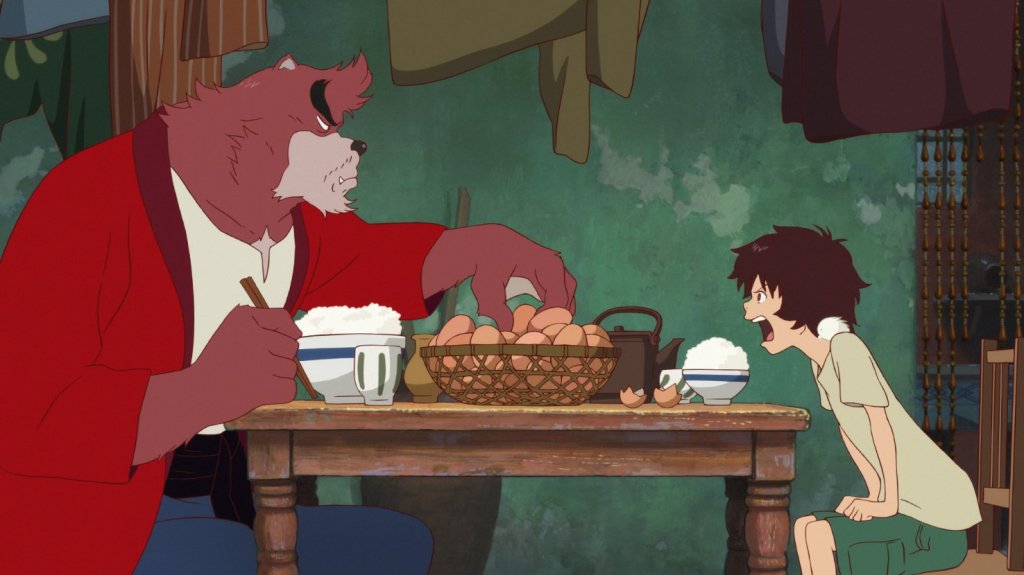
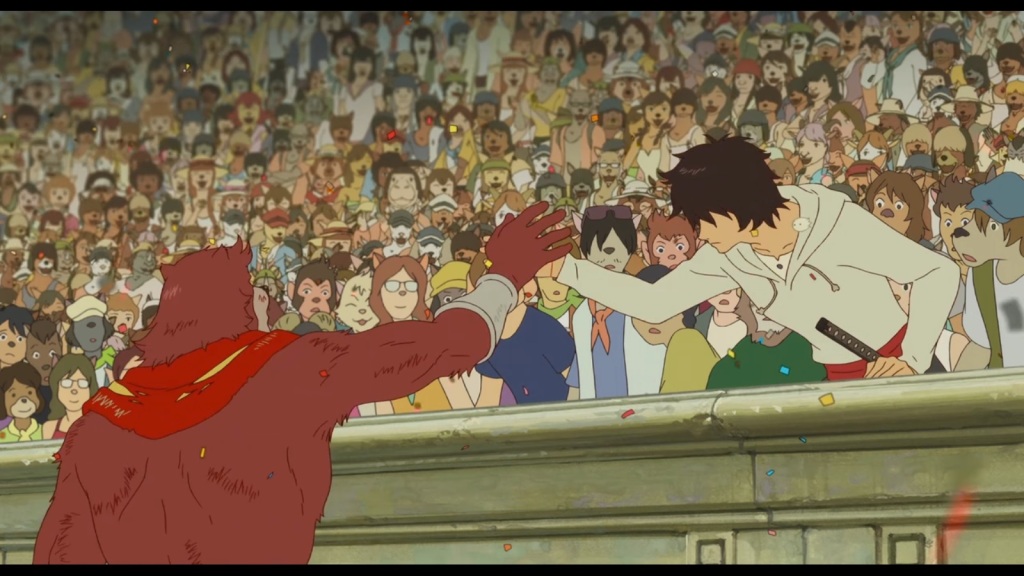
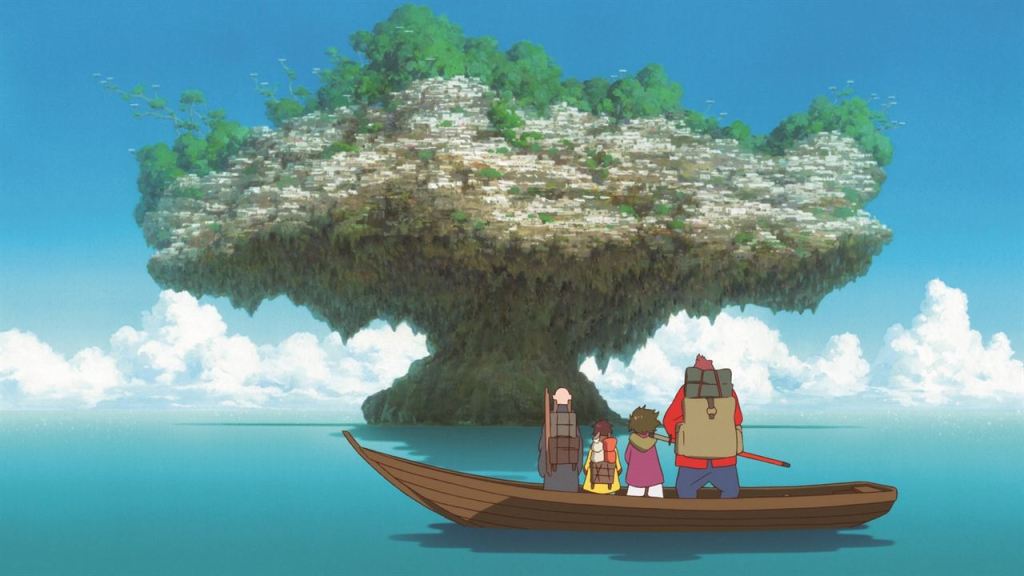
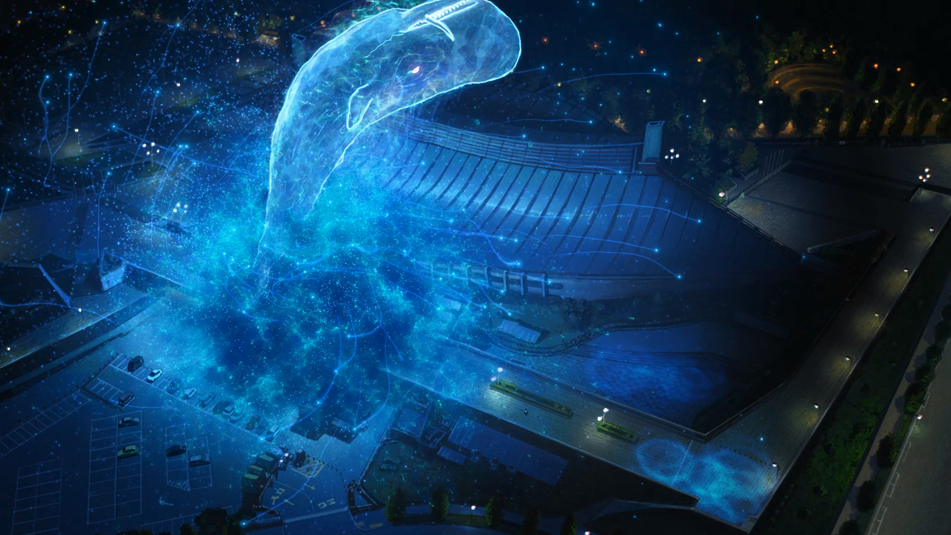
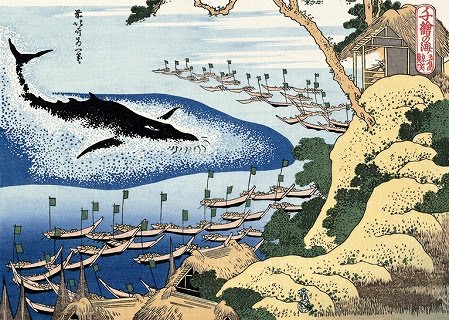
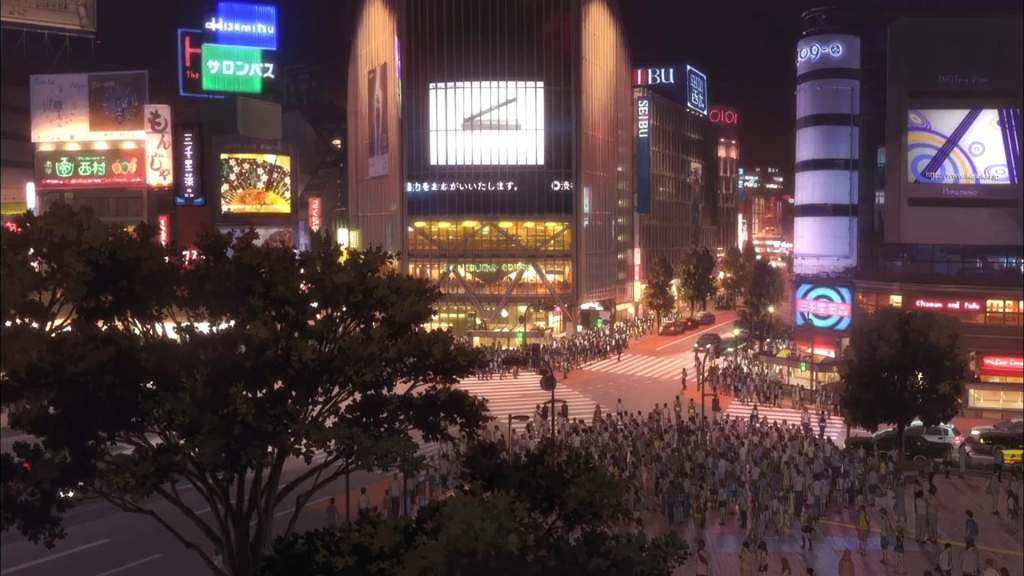
Can you please do the analysis of ‘serial experiments lain’ I believe it is a very good work for its time(having won many awards) but at the same time it’s so confusing
Hello Yash, thank you for following my blog.
You are not the first, nor the last, to ask me to write an article on Serial Experiments Lain. As I have said several times, on the internet there are thousands of analyzes and interpretations of SEL, for this reason I preferred to give priority to other anime or manga. However, given the numerous requests I have received, I will try to write my own analysis on SEL as soon as possible. However, I cannot say when I will publish it.